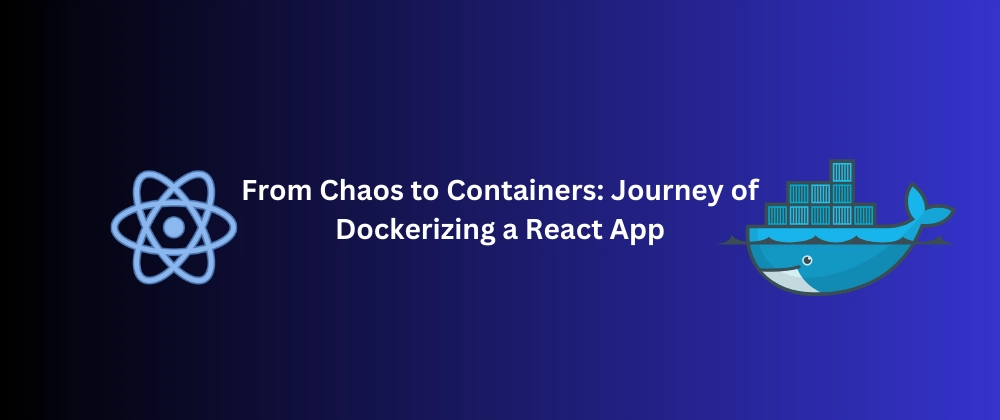Introduction
Let me tell you a secret: containerization used to sound like rocket science to me. Docker? More like "Docker-what?" But after wrestling with inconsistent environments and deployment headaches, I discovered how Docker can be a developer's best friend. In this blog, I will share how you can start moving your React app to Docker and why you should do that.
Why Bother with Docker?
Picture this: You've built a killer React app, and it works perfectly on your machine. But when you try to deploy it? Suddenly, it's like trying to fit a square peg in a round hole. Different dependencies, configuration nightmares, environment quirks - sound familiar?
That's where Docker comes in. It's basically a magic box that packages your entire application with all its dependencies, ensuring it runs exactly the same everywhere. No more "But it works on my computer!" excuses.
Getting Started: Our Dockerization Adventure
Step 1: Setting Up Our React Playground
First things first, we'll create a fresh React project using Vite. Think of Vite as that cool, lightweight build tool that makes your development experience smooth:
npm create vite@latest my-react-app -- --template react-ts
cd my-react-app
npm install
Step 2: The Production Build Dance
Before we containerize, we need to create a production-ready build. It's like polishing your app before a big presentation:
npm run build
Step 3: The Docker Preparation
We'll create a .dockerignore file - think of it as a bouncer that keeps unnecessary files out of our Docker party. No node_modules, no build artifacts, just the essentials.
Step 4: Crafting the Dockerfile - Our Container's Blueprint
Here's where the magic happens. We'll use a multi-stage build that's both clever and efficient:
# Stage 1: Build our application
FROM node:20-alpine AS builder
WORKDIR /app
COPY package*.json ./
RUN npm install
COPY . .
RUN npm run build
# Stage 2: Serve with Nginx
FROM nginx:alpine
COPY --from=builder /app/dist /usr/share/nginx/html
EXPOSE 80
CMD ["nginx", "-g", "daemon off;"]
This isn't just a Dockerfile; it's a lean, mean, deployment machine. The first stage builds our app, and the second stage serves it using Nginx - lightweight and fast.
Explanation:
- Stage 1: Uses the official Node.js Alpine image to build the React application. It sets the working directory, installs dependencies, copies the source code, and runs the build process. 
- Stage 2: Uses the official Nginx Alpine image to serve the built application. It copies the contents of the dist directory from the builder stage to Nginx’s default HTML directory, exposes port 80, and starts Nginx.
Step 5: Building and Running Our Container
Now for the moment of truth:
# Build the Docker image
docker build -t my-react-app .
# Run the container
docker run -d -p 8080:80 my-react-app
Open your browser, navigate to http://localhost:8080, and voilà! Your app is running inside a container.
Pro Tips for the Docker-Curious
- Consistency is King: Your app will run identically everywhere.
- Scalability Made Simple: Want to spin up multiple instances? Docker's got your back.
- Environment Isolation: Keep your dependencies clean and separated.
Bonus: Docker Compose
For more complex setups, Docker Compose lets you orchestrate multiple services. It's like conducting an orchestra of containers.
version: '3.8'
services:
frontend:
build: .
ports:
- "8080:80"
container_name: my-react-frontend
Conclusion
Dockerizing isn't just a technical skill; it's a mindset. It's about creating robust, portable, and scalable applications. Containerize your apps, simplify your workflows, and enjoy the magic of predictable deployments. If you like this blog and want to learn more about Frontend Development and Software Engineering, you can follow me on Dev.to.



Top comments (0)